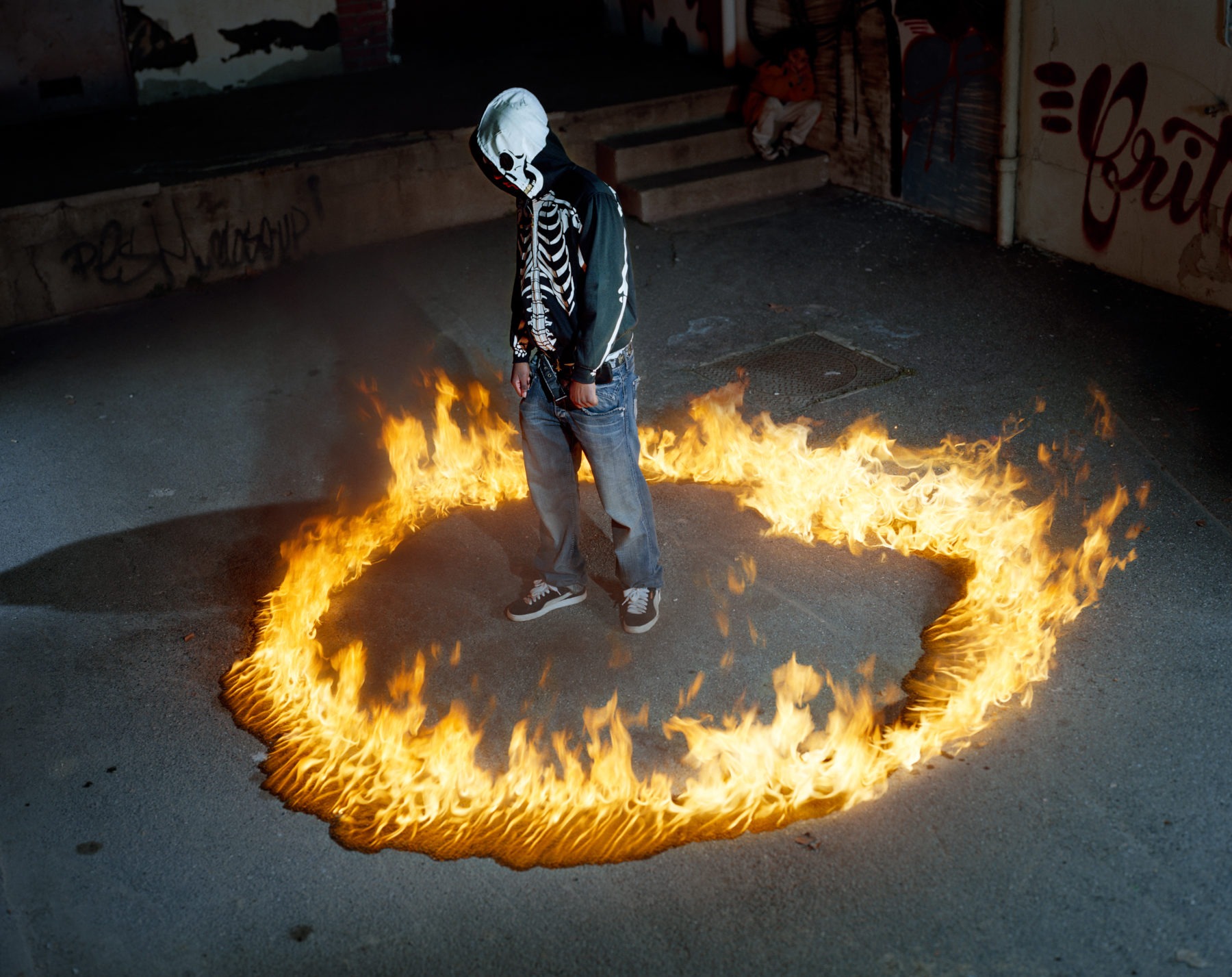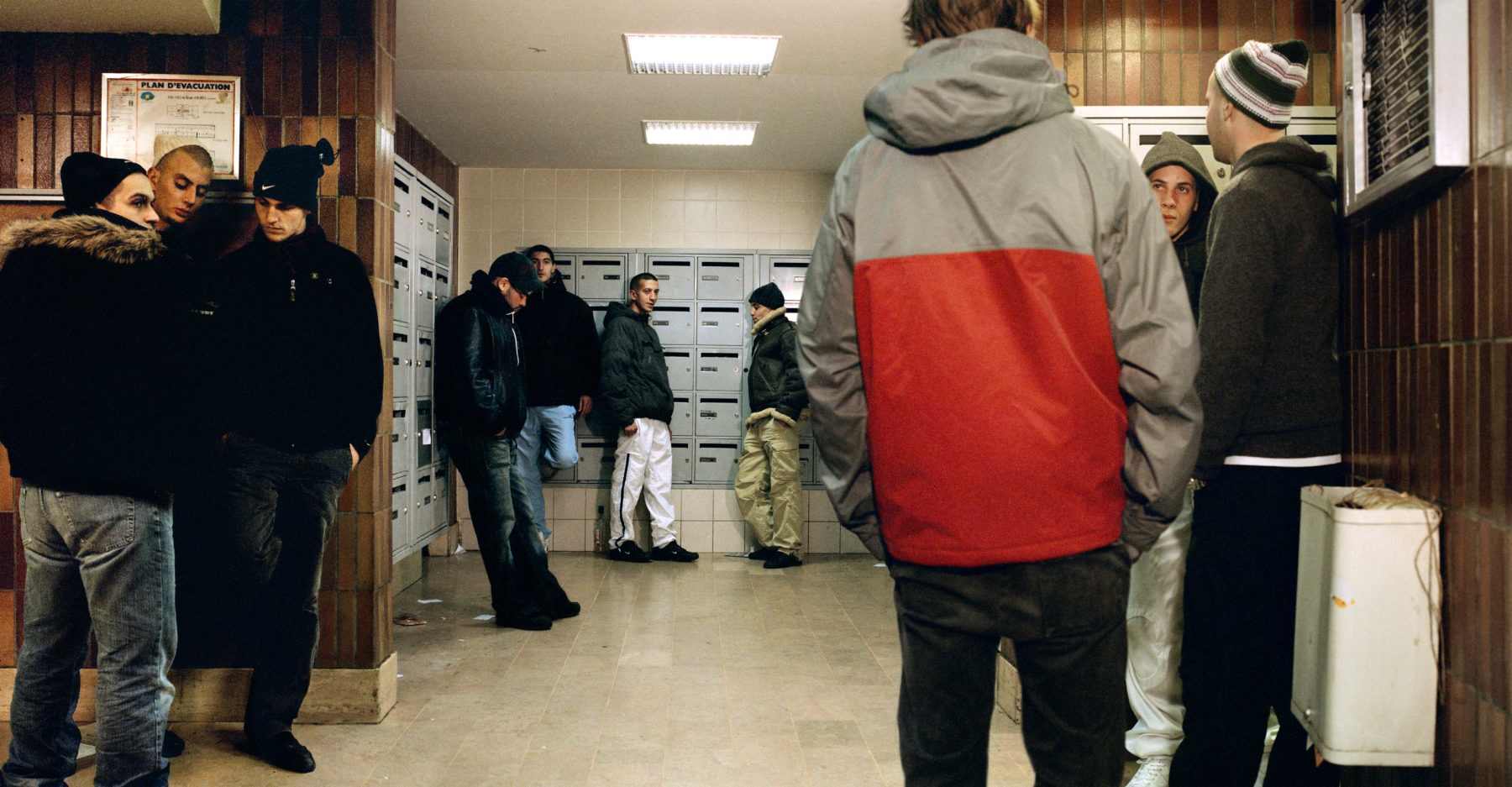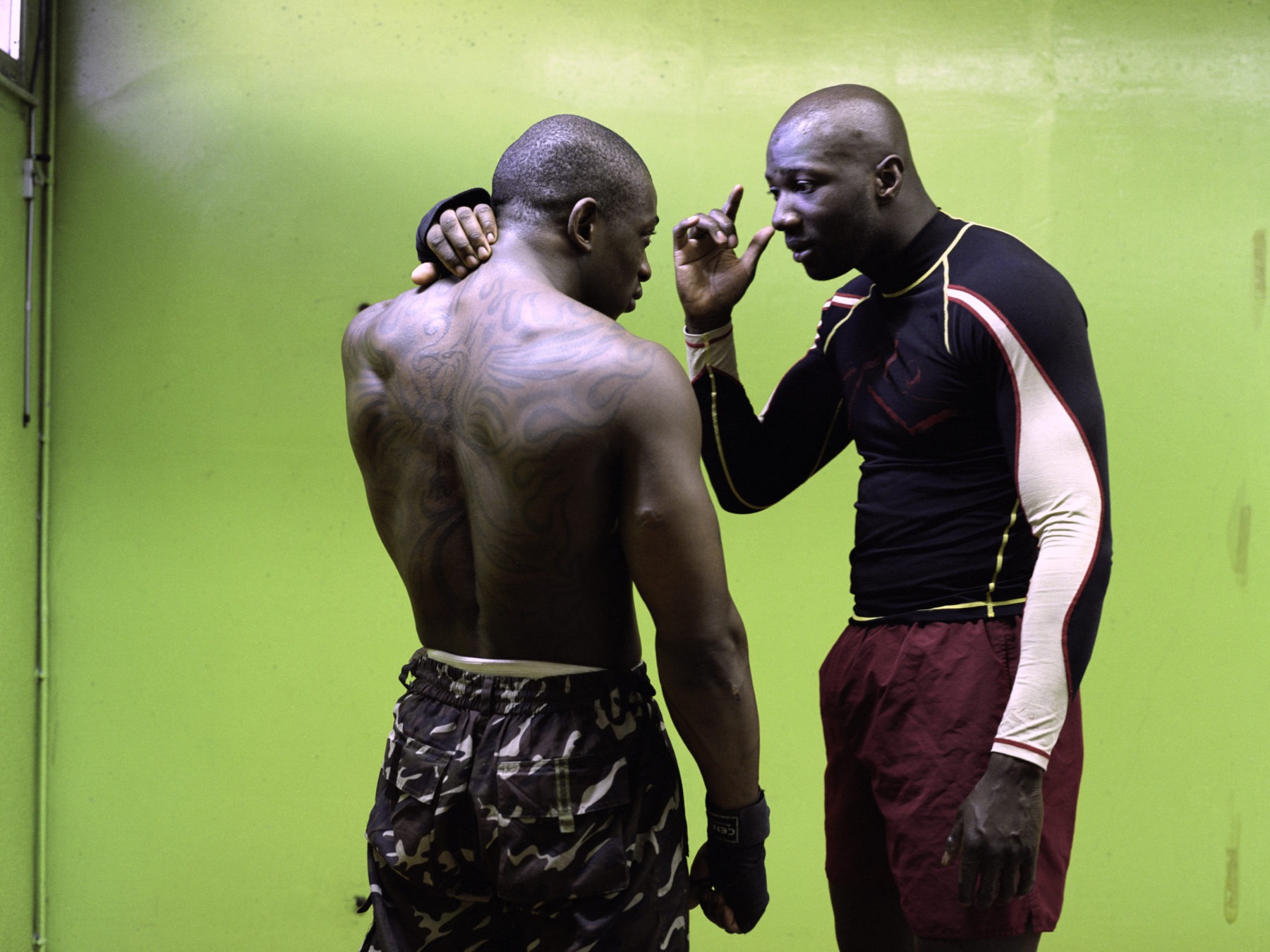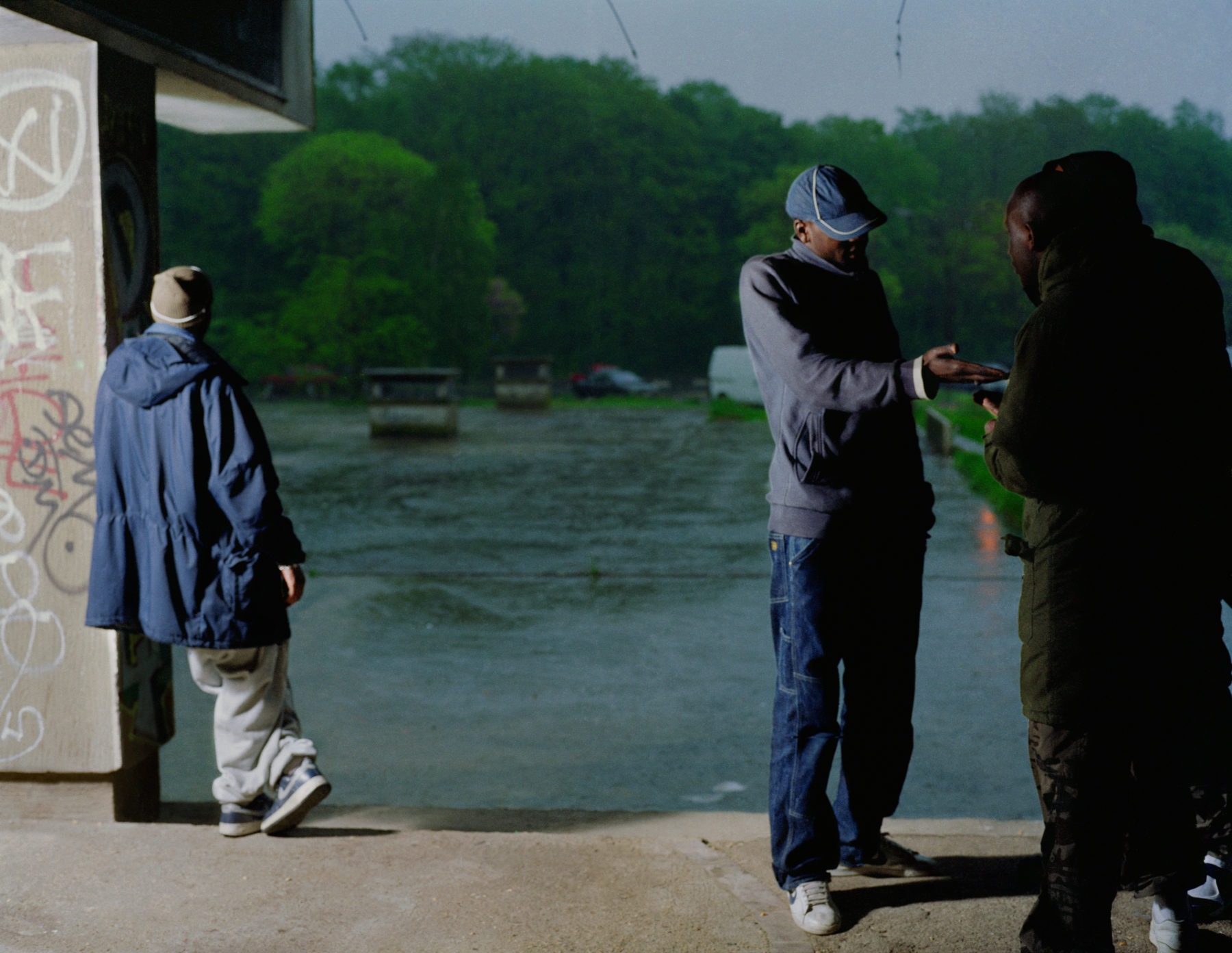Périphérique
The Mirror
By Simon Njami (Translated from French by David Ames Curtis)
Visit the Arabic version here

To be honest, we were not the only ones to be moved by this kind of revolution, which still remains anchored in people’s memories. We were witnesses to an event, in the most etymological sense of the term –– that is to say, to the rising up of the unexpected. France awoke to find itself forced to face its ghosts, to look squarely at the failures of its colonial past and its inability to really integrate into the French Republic all its subjects who were not considered to be “French like the rest.” Suddenly, a generation left to its own devices, tired of being treated as nonexistent and systematically stigmatized, stood up and shouted out its despair and its anger. They are French –French like the rest.
Though confined within the horizonless setting of high-rise housing projects far removed from city centers, they are citizens of the French Republic. Their countries of origin, the lands from which their parents or their grandparents came, are quite often nothing but an old dream kept up within the family, a fantasy from which they know they are already excluded. So, they burn in order to exist. They break things in order to say that they are alive and breathing. They lure in the television news cameras, which are wont to turn their lenses only toward an event, a spectacle that has become news.
Their countries of origin, the lands from which their parents or their grandparents came, are quite often nothing but an old dream kept up within the family, a fantasy from which they know they are already excluded.
––Simon Njami



These young people who are playing their own roles have necessarily entered into what Jean-Paul Sartre had called the process of splitting. In becoming aware of the image they are projecting within society, they become other, abstractions, thinking beings who are making an ontological and political comment on the gaze of those who want to trap them within the image they have agreed to take on. This is a fool’s game, a game of mirrors, in which those who thought they were looking are in fact those who are under the watchful eye of others. The mirror affords this necessary splitting.
What is expressed here is the impossibility of being “one,” the fact that this reflection of ourselves comes back deformed because it is but a reflection. This is the reflection of a subject, no doubt, but still more it is a reflection of the world that surrounds this subject and of the setting that conditions the subject and dictates to him his humanity.
Bourouissa’s work is eminently political, even though he would undoubtedly refrain from saying so. For, in being content to be a neutral observer and in being persuaded that there is no need to add anything to the obvious facts he reveals, he becomes subversive. He starts to sing a sometimes forgotten hymn, the one Ernst Bloch had called the “key question:” the self-contained question of “we.” For, in every “we,” there is first of all an “I”.
And how will we ever succeed in constructing a way of living together that accepts difference as an item of wealth, as the sole guarantee of our aptitude for humanity? These are the pressing questions raised by Bourouissa’s photographs, the violence of which appears so contained. And the French Republic–this symbol represented by blue, white and red–had better watch out, if it proves incapable of loving and protecting its children. All its children.
_____
This essay originally appeared in the catalog of Mohamed Bourouissa’s solo exhibition Le Miroir (The Mirror) at SCAD Museum of Art. The essay is published here with the permission of the author.

Simon Njami has organized numerous exhibitions of contemporary African art, among them Africa Remix (works by eighty contemporary African artists shown at five venues worldwide) from 2004 to 2007, and curated the African pavilion of the Venice Biennale in 2007 and the FNB Joburg Art Fair 2008 in Johannesburg, South Africa.
He was a co-founder and chief editor of Revue Noire, and artistic director of the ‘Bamako Photography Biennial’ for ten years, and has published numerous writings on African art.
@mohamedbourouissa
mohamedbourouissa.com
Mohamed Bourouissa implicitly describes contemporary society by its contours. With a critical take on the mass media image, the subjects of his photographs and videos are people left behind at the crossroads of integration and exclusion.
Preceded by a long immersion phase, each of Mohamed Bourouissa’s projects builds a new enunciation situation. Unlike false simplistic media constructions, the artist reintroduces complexity into the representation of the margins of hypervisibility.
His work has been exhibited in numerous solo exhibitions, at the Musée d’Art Moderne de la Ville de Paris, the Centre Pompidou de Paris, the Barnes Foundation, Philadelphia, the Stedelijk Museum, Amsterdam, the base in Frankfurt am Main, the Ball, Paris, the Haus der Kunst, Munich and the FRAC Franche-Comté in Besançon.
He has participated in the Sharjah, Havana, Lyon, Venice, Algiers, Liverpool and Berlin Biennales and the Milan Triennial.
In 2018, he was nominated for the Marcel Duchamp Prize. In 2017, he was selected for the Prix Pictet photography prize. His works belong to leading collections, including that of the LACMA in Los Angeles, the Centre Pompidou, the Maison européenne de la photographie in Paris, and the Stedelijk Museum in Amsterdam.
Related Topics
Community Spirit
2021